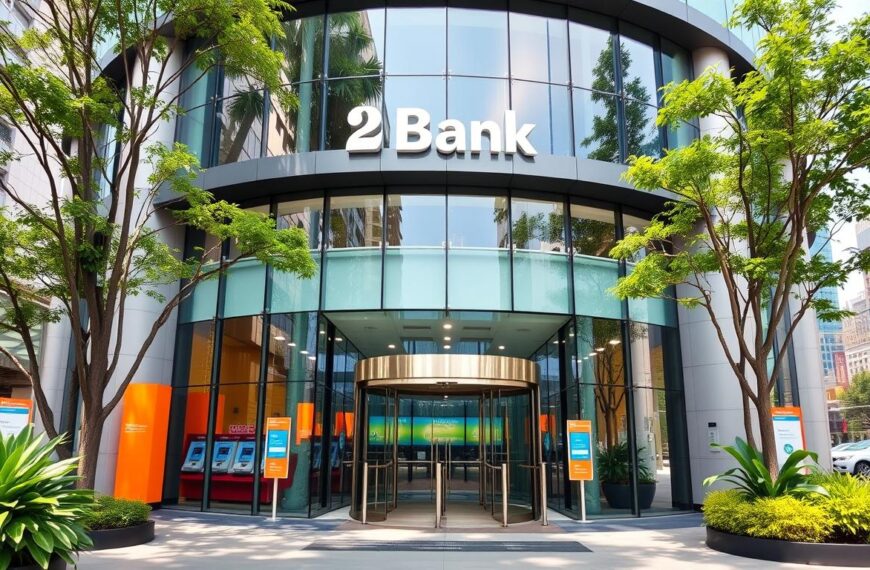The UK’s Labour government, led by Chancellor Rachel Reeves, has made a big change. On 30 October 2024, they introduced their first Budget in 14 years. This move aims to raise £40 billion more, affecting small businesses a lot1.
One major change is a 1.2 per cent hike in employers’ National Insurance contributions. This will make the rate 15 per cent from April 20251. Also, the National Living Wage for those 23 and over will jump to £12.21 an hour, a 6.7 per cent rise2. For 18-20-year-olds, the National Minimum Wage will go up from £8.60 to £10 an hour2.
The Budget also tweaks Capital Gains Tax (CGT). The lower rate will now be 18 per cent, up from 10 per cent. The higher rate will go from 20 per cent to 24 per cent for sales after 30th October 20242. The Business Asset Disposal Relief (BADR) CGT rate will increase to 14 per cent from April 2025, then to 18 per cent from April 20262.
But, the Budget isn’t all about higher taxes. It also offers some help to small businesses. From 2026/27, two new lower business rates will be introduced for retail, hospitality, and leisure sectors1. The Corporate Tax Roadmap also aims to keep the UK competitive. It promises to keep the corporate tax rate at 25 per cent and retain the small profits rate and marginal relief1.
In summary, the UK Budget brings a mix of tax changes and support for small businesses. Entrepreneurs and small business owners need to keep an eye on these changes. This will help them prepare for the future economic landscape123.
Understanding Labour’s First Budget in 14 Years
The Labour government’s first Budget in 14 years is all about “invest, invest, invest.”4 It aims to boost the economy with big infrastructure projects and business support. The Budget aims to raise £40 billion more in taxes4 and make big changes from April 2025, like changes to National Insurance and the Employment Allowance4.
Key Budget Objectives and Revenue Goals
The Budget focuses on growing the economy and investing. It plans to spend £100 billion on capital projects over five years4. It also aims to invest £70 billion through the National Wealth Fund4. Plus, £20 billion will go to growth industries like aerospace and life sciences4.
Timeline for Implementation
The Budget’s vision is clear, but the timeline is gradual. Changes like higher employers’ National Insurance from 13.8% to 15%5 and a lower secondary threshold for NI from £9,100 to £5,0005 start in April 2025. This gives businesses and individuals time to adjust.
Economic Context and Market Response
The Budget comes at a tough time for the economy. The UK’s GDP growth forecast has been cut from 2% to 1.8% in 20265. But the Budget aims to help businesses and offer relief to retail and hospitality sectors. It includes a new lower business rates multiplier from 2026-274.
The market’s reaction to the Budget is mixed. There are worries about small businesses and the economy. Yet, the government’s focus on investment and growth is cautiously optimistic. The UK is trying to get through these tough times4.
National Insurance and Employment Changes
The UK Budget is set to change how employers pay National Insurance and their employment policies. This will affect small businesses all over the country6. Employers’ National Insurance will go up by 1.2%, to 15% from April 20256. Also, the amount an employer must pay National Insurance will drop from £9,100 to £5,000 per employee next April6.
To help small employers, the Employment Allowance will jump from £5,000 to £10,500 per business in April 20256. This change will help about one million small businesses. They will be able to hire four full-time workers on the National Living Wage without paying National Insurance7.
The National Living Wage will also increase, going up by 6.7% to £12.21 per hour from April 20256. The National Minimum Wage for 18-20 year olds will rise by 16.3% to £10 per hour from the same date6. These increases aim to support low-paid workers and help with the cost of living for many people and families.
| Measure | Change |
|---|---|
| Employers’ National Insurance Contributions | Increase from 13.8% to 15% from April 20256 |
| Threshold for Employers’ NI | Decrease from £9,100 to £5,000 per employee from April 20246 |
| Employment Allowance | Increase from £5,000 to £10,500 per business from April 20256 |
| National Living Wage | Increase by 6.7% to £12.21 per hour from April 20256 |
| National Minimum Wage (18-20 year olds) | Increase by 16.3% to £10 per hour from April 20256 |
These changes aim to support workers and their families but will affect small businesses’ costs8. Small business owners will need to look at their budgets closely. They must find ways to manage the higher National Insurance and minimum wage8.
UK Budget Small Businesses: Tax Relief and Support Measures
The latest UK Budget has introduced tax relief and support for small businesses. Tax planning is now more important for SMEs as they face economic challenges.
Business Rates Relief for Retail and Hospitality
A 40% business rates relief is given to retail, hospitality, and leisure sectors, up to £110,000 per business9. This helps ease the financial strain on these crucial industries, which have struggled lately.
Corporate Tax Roadmap Overview
The Budget also outlines the Corporate Tax Roadmap. It promises to keep the 25% corporation tax rate and the 19% small profits rate9. It also keeps the current capital allowances, helping with tax deductions for new equipment and assets.
Small Business Strategy Command Paper
The government plans to publish a Small Business Strategy Command Paper next year9. This will offer clarity and guidance on future support for small businesses, covering finance, skills, and regulations.

The Budget focuses on business rates relief, corporate tax stability, and the Small Business Strategy Command Paper9. These steps show the government’s dedication to a thriving small business sector in the UK9. They aim to help small businesses grow and succeed, alongside initiatives like the Fair Payment Code and the Disability Finance Code for Entrepreneurship9.
“The Budget safeguards one million small firms from National Insurance increases and extends business rates relief, particularly benefiting the retail, hospitality, and leisure sectors.”
As the UK faces economic challenges, these tax relief and support measures are crucial9. They show the government’s understanding of small businesses’ importance in economic growth and job creation9. The Budget aims to empower small businesses to thrive and contribute to the country’s prosperity.
Capital Gains and Property Tax Reforms
The UK government has made big changes to capital gains tax (CGT) and property taxes. These changes will affect small businesses and investors10. The lower CGT rate has gone up from 10% to 18%, and the higher rate from 20% to 24%. These changes start on 30 October 202410.
The lifetime limit for Business Asset Disposal Relief (BADR) will drop from £10 million to £1 million. This change applies to disposals made after 30 October 202411.
But, there’s good news for small businesses10. The BADR tax rate will go up to 14% from 6 April 2025 and 18% from 6 April 2026. This makes it more beneficial for entrepreneurs and business owners11. Also, the small profits rate of corporate tax will stay at 19%. This helps small and medium-sized enterprises (SMEs)10.
In property tax, the UK government has also made changes10. The extra rate of Stamp Duty Land Tax (SDLT) for certain property buys in England and Northern Ireland will go up by 2%. The higher rate for company buys will be 17%10. These changes aim to stop too much investment in multiple homes and help make housing more affordable.
There have also been changes to Inheritance Tax (IHT)11. The rates for business and agricultural property relief will drop from 100% to 50% after the first £1 million from 6 April 202611. Also, the IHT nil-rate bands will be frozen until 5 April 2030. This might mean more people and businesses will have to pay IHT11.
These changes in capital gains and property taxes offer both challenges and chances for small businesses and investors1011. It’s important to plan carefully and make smart decisions to make the most of these changes1011.
| Tax Change | Previous Rate | New Rate |
|---|---|---|
| Capital Gains Tax (Lower Rate) | 10% | 18% |
| Capital Gains Tax (Higher Rate) | 20% | 24% |
| Business Asset Disposal Relief (BADR) Tax Rate | 10% | 14% (from 6 April 2025), 18% (from 6 April 2026) |
| BADR Lifetime Limit | £10 million | £1 million (from 30 October 2024) |
| SDLT Additional Rate for Certain Property Purchases | 3% | 5% |
| SDLT Higher Rate for Company Property Purchases | 15% | 17% |
| Business Property Relief and Agricultural Property Relief Rates | 100% | 50% (after first £1 million, from 6 April 2026) |
The UK government’s tax reforms aim to balance making money and helping small businesses and investors1011. By understanding these changes and planning well, small business owners and investors can navigate the changing tax world. They can make informed decisions to secure their financial future1011.
“The tax changes introduced in the UK Budget present both challenges and opportunities for small businesses and individual investors. Careful planning and strategic decision-making will be crucial in maximising the potential benefits and navigating the evolving tax landscape.”
Conclusion
The Labour government’s first Budget in 14 years brings big changes for small businesses in the UK. These include higher National Insurance contributions12, changes to Capital Gains Tax12, and new business rates relief. While some measures aim to help small businesses, others might raise costs1213.
As small business owners in the UK face these new tax and rules, there’s hope. The Corporate Tax Roadmap and the upcoming Small Business Strategy Command Paper offer hope. They aim to give businesses the certainty they need for planning12. Yet, with three-quarters of SMEs worried the Budget will harm their growth plans13, owners must think carefully about these changes.
Despite the hurdles, the OECD’s positive growth forecast for 202413 shows SMEs are key to the UK’s recovery. By keeping up with news, adjusting their tax plans, and using support, small businesses can thrive. They can overcome the UK Budget’s challenges and aim for success1213.
FAQ
What were the key objectives and revenue goals of the 2024 UK Budget?
The 2024 UK Budget aimed to raise £40 billion more in taxes. Chancellor Rachel Reeves focused on investing in growth through infrastructure. The Budget’s main message was to “invest, invest, invest”.
When will the key changes from the UK Budget be implemented?
The UK Budget’s main changes, like changes to National Insurance and employment allowance, will start in April 2025.
How will the UK Budget impact the economic context and market response?
The Budget aims to support businesses while funding public services. It considers the impact on small businesses and the economy.
What changes are being made to National Insurance contributions and employment allowance?
Employers’ National Insurance will rise from 13.8% to 15% in April 2025. The threshold for employer NICs will drop from £9,100 to £5,000. To help small employers, the employment allowance will jump to £10,500 per year, with no £100,000 cap.
What tax relief and support measures are being introduced for small businesses?
The Budget offers a 40% relief on business rates for retail, hospitality, and leisure, capped at £110,000. The small business tax multiplier will stay at 49.9p. It also promises to keep the 25% corporation tax rate and the 19% small profits rate.
A Small Business Strategy Command Paper will be released next year. It will outline future support for small businesses.
How have Capital Gains Tax and property tax reforms been addressed in the UK Budget?
Capital Gains Tax rates have gone up. They now range from 18% for basic rate taxpayers to 24% for higher and additional rate taxpayers. This change takes effect on 30 October 2024.
Business Asset Disposal Relief will increase to 14% in April 2025 and 18% from 2026-27. The lifetime limit will be £1 million. Inheritance Tax changes include updates to business and agricultural property relief. Stamp Duty Land Tax rates for certain property purchases have also increased by 2%.

















